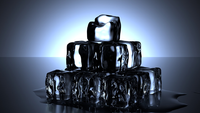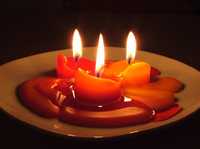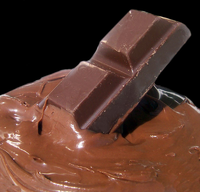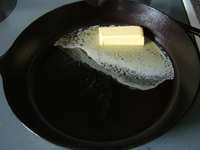Difference between revisions of "Melting"
(→About Melting) |
|||
| Line 34: | Line 34: | ||
|[[File:ButterMelt.png|center|200px]] | |[[File:ButterMelt.png|center|200px]] | ||
|- | |- | ||
| − | | style="height:20px; width:200px; text-align:center;" |Chocolate can ''' | + | | style="height:20px; width:200px; text-align:center;" |Chocolate can '''melt''' in your mouth because your mouth is warm. |
| style="height:20px; width:200px; text-align:center;" |You can '''melt''' butter in a frying pan. | | style="height:20px; width:200px; text-align:center;" |You can '''melt''' butter in a frying pan. | ||
|} | |} | ||
Revision as of 15:39, 22 September 2018
Key Stage 2
Meaning
Melting is when a solid turns into a liquid.
- Verb: To melt
| A solid will melt and become a liquid. |
About Melting
- Most solids can be melted to become a liquid.
- Melting is a reversible process. When a solid melts you can always freeze it back into a solid.
- You may have seen these solids melt
- Ice
- Wax
- Chocolate
- Butter
Examples
| Some ice cubes melt to make water. | Wax melts because of the flame. |
| Chocolate can melt in your mouth because your mouth is warm. | You can melt butter in a frying pan. |




